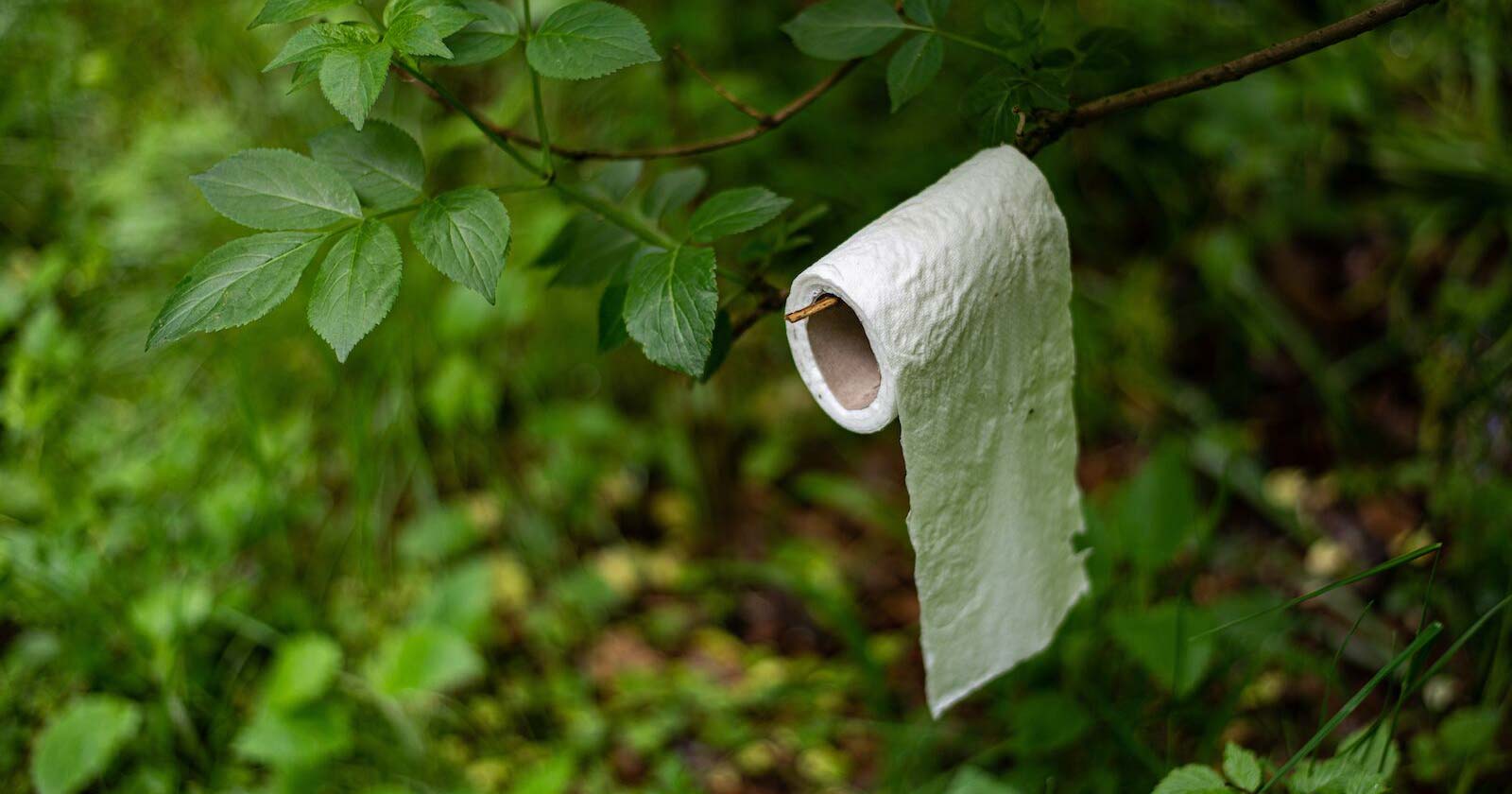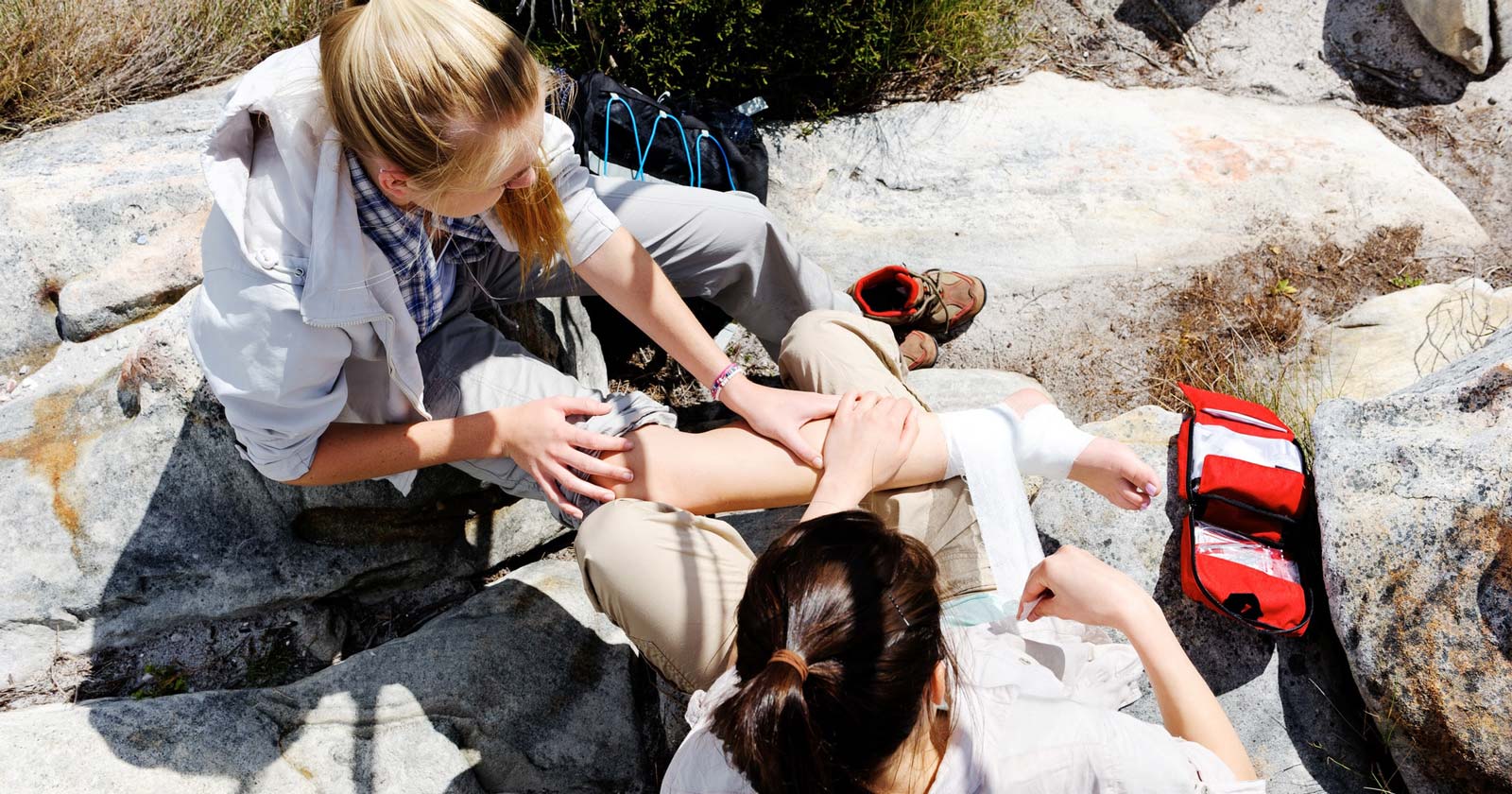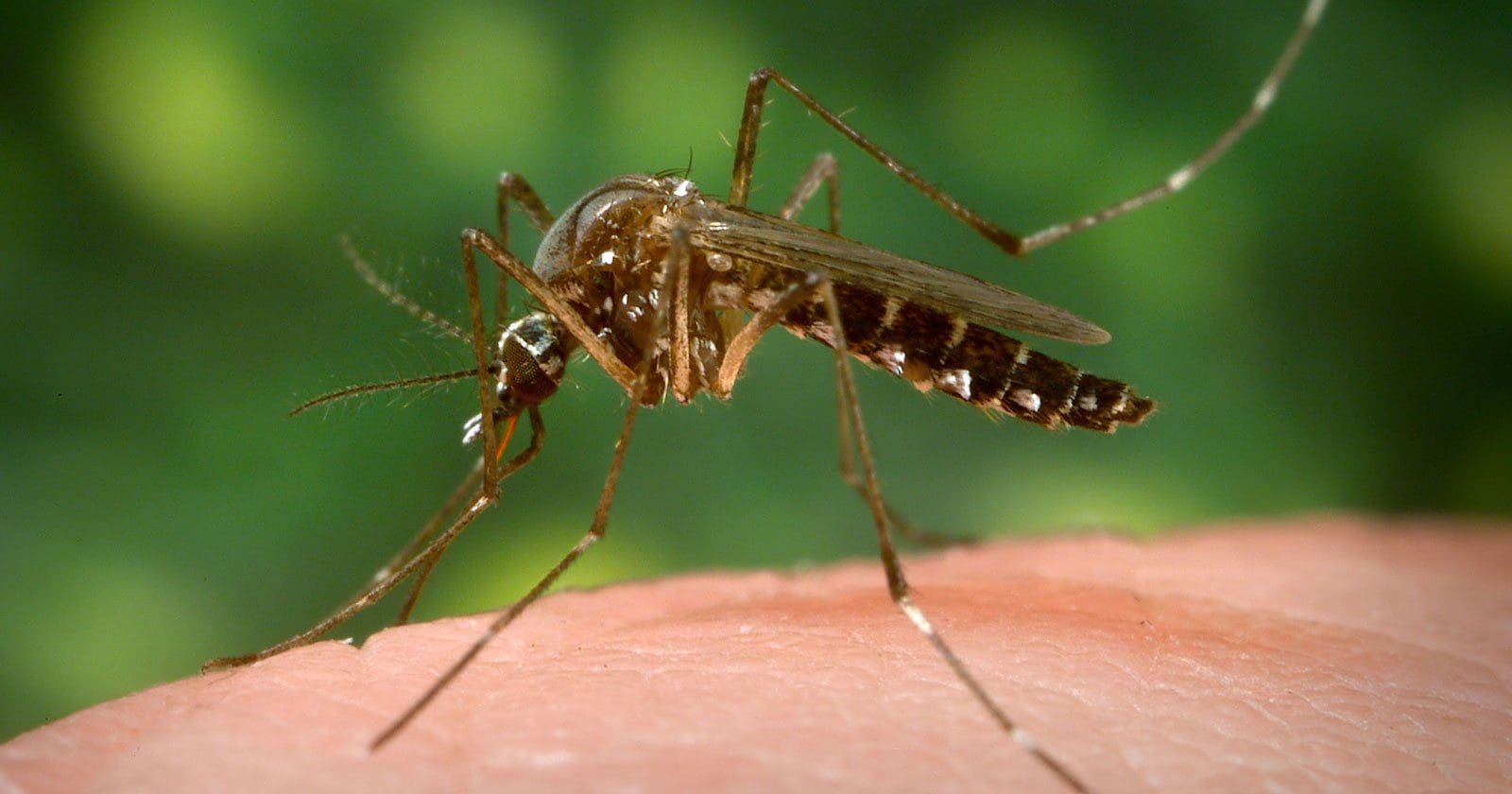Let’s face it, wet feet are a common hiking experience. But what happens when those wet feet turn into a case of trench foot or other foot problems? A recent Facebook post sparked a debate about the best way to keep your feet dry and comfortable on the trail, particularly regarding merino wool socks and waterproof boots. The post described a young hiker who experienced what seemed like trench foot after a rainy hike, despite wearing good quality merino wool socks and boots. The comments section turned into a lively discussion about the pros and cons of different fabrics and footwear for wet conditions.
So, what’s the solution to keeping your feet happy and healthy on a wet hike?
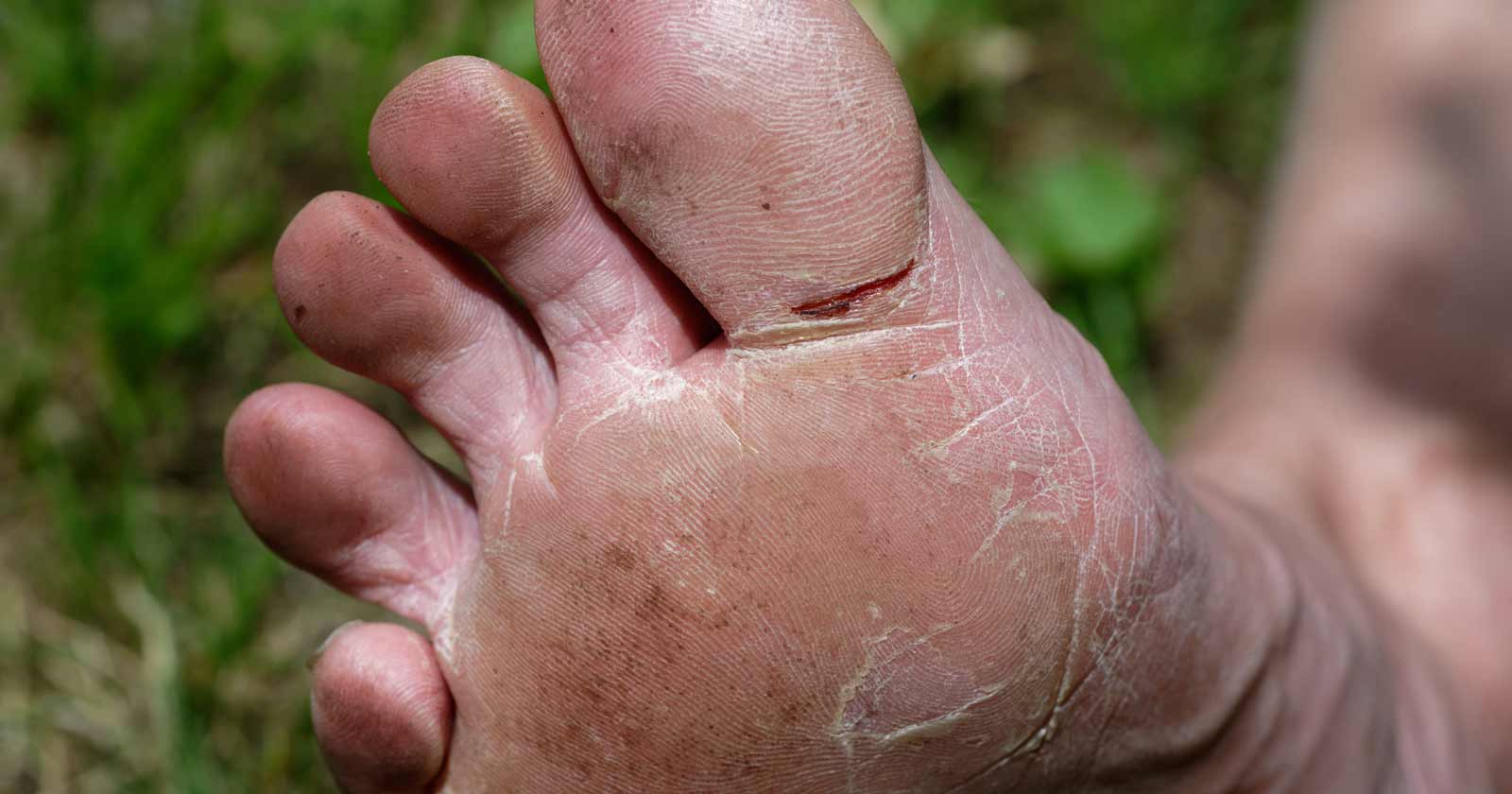
The challenge of wet feet
Wet feet are more than just uncomfortable—they can lead to serious issues like trench foot, blisters, fungal infections, and even athlete’s foot. This contagious fungal infection thrives in moist environments, so keeping your feet dry is crucial for preventing it and other fungal infections in general. Prolonged wetness can also lead to skin breakdown, softening skin and making it more susceptible to tears, cuts, and infections. Friction from wet socks and shoes can worsen existing corns and calluses. Proper foot care is essential to prevent these problems and ensure a pleasant hiking experience.
Considerations for different climates
When choosing socks and footwear, consider the expected weather conditions. In hot climates, prioritise breathability. Look for thin, liner socks made from moisture-wicking synthetics like polypropylene and opt for trail running shoes with good ventilation. In colder environments, merino wool socks can offer warmth and odour resistance, but pair them with a waterproof outer layer if you anticipate significant moisture.
Merino wool: Friend or foe?
Merino wool has become a popular choice for hikers due to its excellent moisture-wicking and odour-resistant properties. However, the comments highlight a crucial point: merino wool does absorb water. While it can retain some warmth even when damp, compared to synthetics like polypropylene, it won’t keep your feet dry in prolonged wet conditions.
Merino wool socks – Pros and cons
Merino wool socks are favoured for their comfort, odour resistance, and temperature regulation. However, they retain moisture and dry slowly. They may be best for dry conditions or camp wear rather than continuous wet environments. If you prefer merino wool, consider a layering approach with moisture-wicking liner socks underneath.
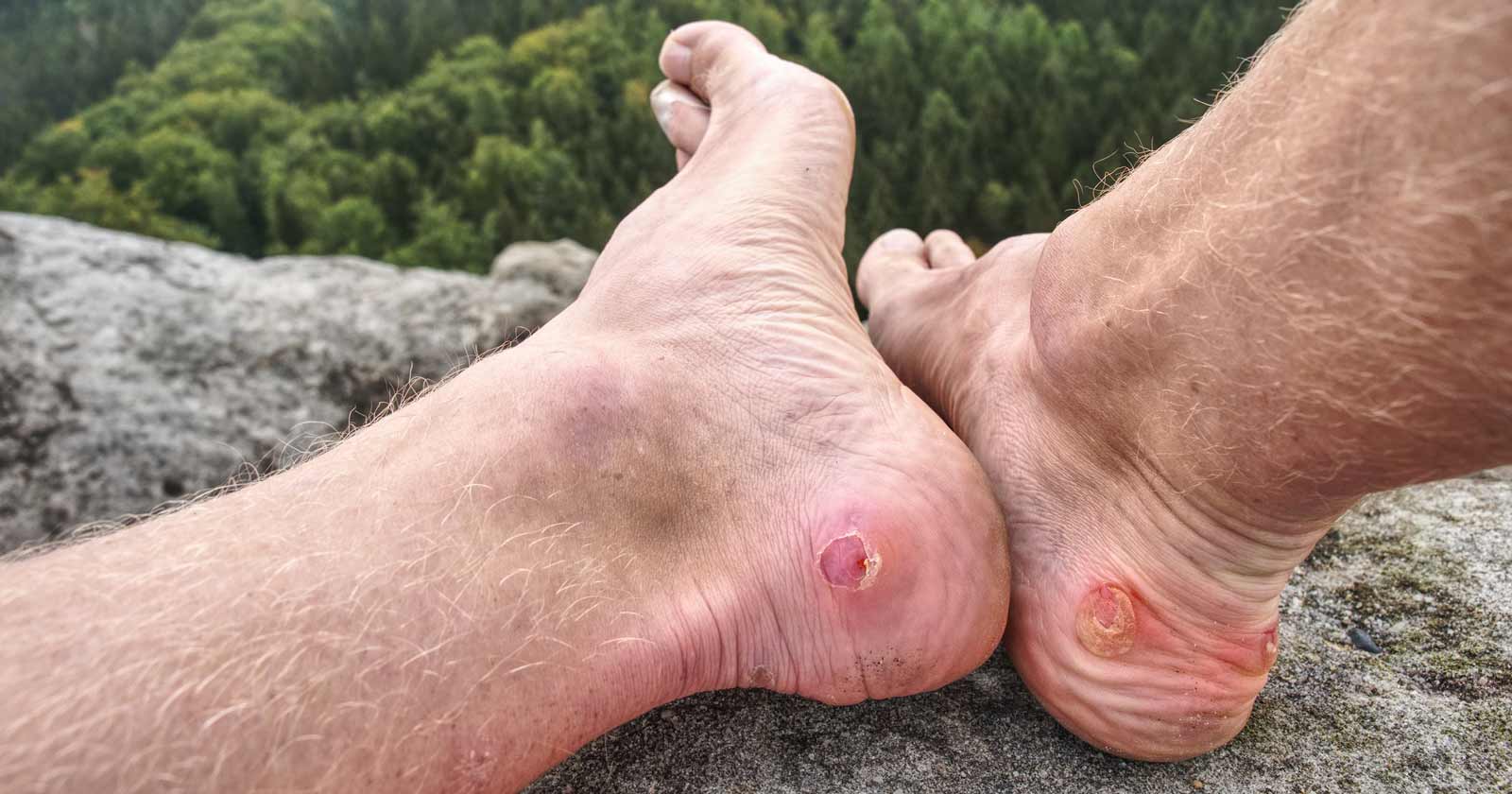
Wool vs. Synthetics: A Balancing Act
It’s important to clarify a common misconception about merino wool. While merino wool is lauded for its moisture-wicking properties, it does absorb water, up to about 30% of its own weight. This is still significantly better than cotton, viscose, or even regular wool, which can absorb much more moisture and leave your feet feeling heavy and damp. However, polypropylene, a popular synthetic choice, boasts the unique advantage of absorbing close to zero water, making it a great option for prioritising dryness in extremely wet environments.
According to scientific studies and industry reports:
- Merino Wool: Absorbs around 30% of its weight in water. However, unlike cotton that traps the moisture, merino wool’s fibres have a hydrophilic (water-loving) core and a hydrophobic (water-repelling) exterior. This allows merino wool to absorb moisture and then slowly release it as vapor through the fabric, keeping you comfortable for longer periods. This is a key advantage over other natural fibres like:
- Cotton: Absorbs much higher amounts, up to 70% of its weight, leaving feet feeling heavy and wet.
- Viscose: Like cotton, viscose can absorb up to around 70% of its weight in water.
- Regular Wool: Absorbs slightly less than cotton, around 50-60% of its weight.
So, while merino wool will eventually get wet, it won’t leave your feet feeling waterlogged like other natural options. However, there’s a champion in the realm of minimal water absorption:
- Polypropylene: While it doesn’t absorb much water itself (around 0.3% of its weight), polypropylene’s wicking ability comes into play. It pulls moisture away from the skin as sweat, but the moisture doesn’t get absorbed by the fabric itself. Instead, it travels along the fibres and eventually evaporates off the fabric’s surface. This is why polypropylene feels drier against the skin than merino wool in very wet conditions.
It’s important to note that these are approximate values and can vary slightly depending on the specific material and its processing. However, the overall trend remains consistent. Merino wool offers a good balance between moisture-wicking and some level of water absorption, while synthetics like polypropylene excel at keeping feet dry in very wet environments.
The importance of moisture management
Effective moisture management is essential to prevent a variety of foot problems caused by wet feet, including trench foot, athlete’s foot, skin breakdown, and worsened corns and calluses. This includes proper layering, ventilation, and using the right materials.
Layering and moisture-wicking
The Protective Combat Uniform (PCU) system, used by the US military, emphasises layering with synthetic materials that wick moisture away from the body. Hikers can apply a similar system to their feet with liner socks made from materials like polypropylene under thicker merino wool socks. Remember, to further minimise blister risk, ensure your socks fit well (not too tight or loose) and break in new boots before heading out on long hikes.
Synthetic fabrics
Synthetic fabrics like polypropylene are generally favoured for their superior moisture-wicking capabilities. They help keep your feet drier and reduce the chance of trench foot. For those who find regular polypropylene itchy, options like Schoeller-weave polypropylene provide a softer feel while maintaining moisture-wicking properties.
Moisture management through layering
The key to keeping your feet dry lies in effective moisture management. Here’s where layering socks with different properties comes in:
- Inner Layer: Polypropylene (favour this for the inner layer directly against your skin): Polypropylene excels at wicking moisture away from your skin, keeping your feet drier. It doesn’t absorb much water itself but pulls sweat outwards where it can evaporate.
- Outer Layer: Merino Wool (place this next to your boot): Merino wool provides insulation and comfort, especially in colder conditions. It can absorb some moisture wicked away by the polypropylene layer (around 30% of its weight). However, unlike cotton that traps moisture, merino wool releases it gradually as vapor, helping regulate temperature and prevent your feet from feeling excessively sweaty.
Imagine your sock system as a house. You want a waterproof roof (polypropylene) to keep the rain out, followed by breathable walls (merino wool) that allow some moisture vapor to escape while still providing insulation.
Evaporation and ventilation
While layering offers significant benefits, evaporation inside a hiking boot can be limited. Here’s what to consider:
- Limited Evaporation: Because your feet are encased in boots, the rate of moisture evaporation from your socks will be slower.
- Benefits Persist: Despite this, the wicking ability of polypropylene and the moisture-absorbing/releasing properties of merino wool are still valuable. Polypropylene will continue to pull sweat away from your skin, and merino wool will help regulate temperature by absorbing and slowly releasing moisture vapor.
Strategies to enhance evaporation
- Choose Breathable Boots: Look for hiking boots with features that promote airflow, such as mesh panels or breathable membranes. This will help with evaporation even when your feet are inside.
- Take Breaks: Whenever possible, take breaks to loosen your boots and allow your feet to breathe. This significantly improves evaporation.
- Change Socks: If socks become saturated, change them for a dry pair as soon as possible. This prevents moisture buildup and promotes better comfort.
- Consider a Liner: Using a thin, moisture-wicking liner between your foot and the sock can provide an extra layer of protection against moisture.
- Foot Powder: Anti-chafing foot powder can absorb excess moisture and reduce friction.
By incorporating these strategies, you can create a more effective moisture management system for your feet, keeping them drier and more comfortable on hikes.
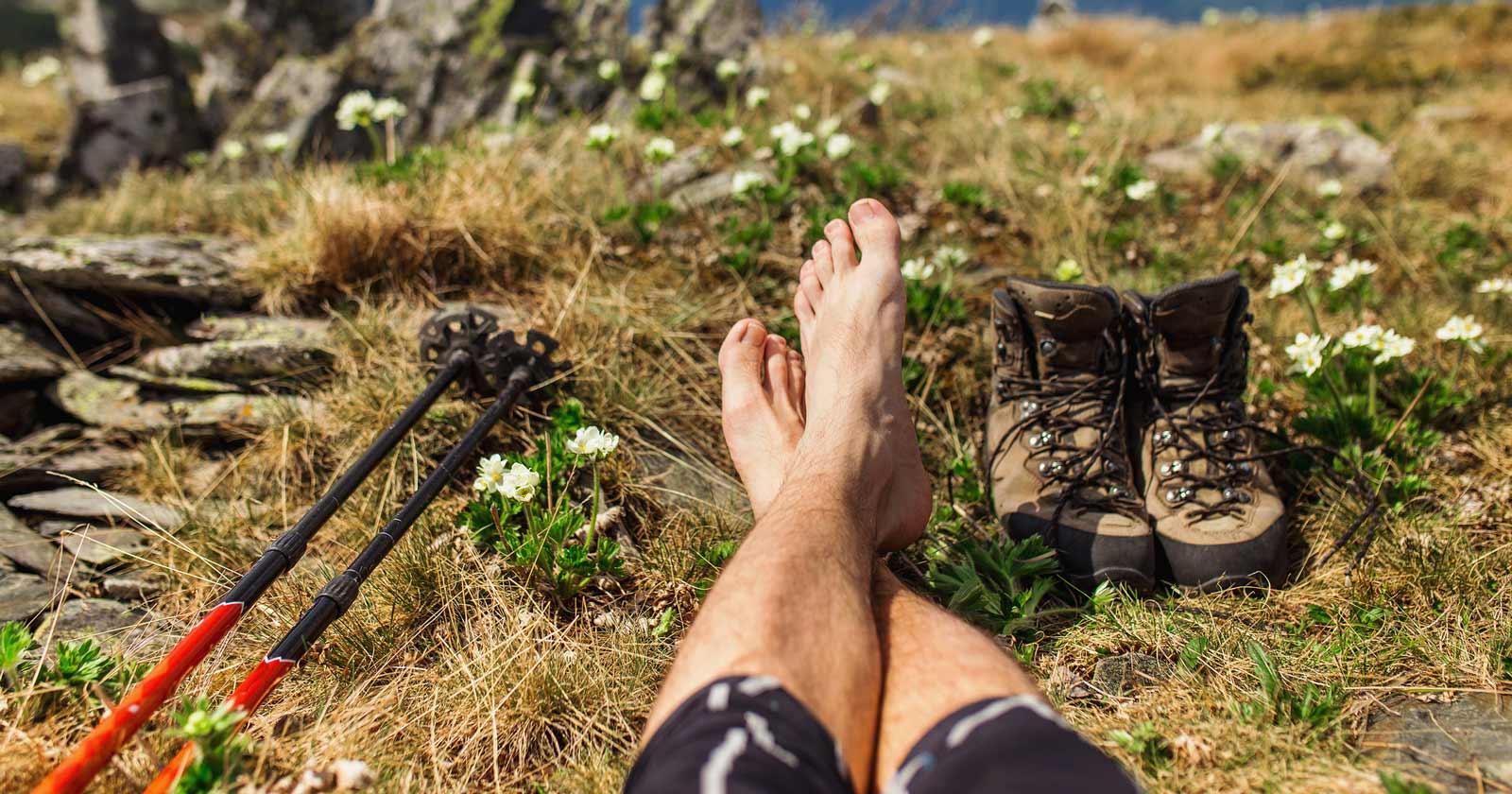
Essential foot care practices
Beyond layering, there’s several practices to keep your feet dry and healthy:
- Change Socks Regularly: When your socks become wet, swap them out for a dry pair. Aim to do this at rest stops throughout the day and at the end of each hike. Even with good gear, sometimes wet conditions are unavoidable. This can lead to uncomfortable, pruny feet and increase your risk of developing blisters or trench foot. Drying your feet thoroughly and changing into fresh, dry socks as often as possible will minimise discomfort and help prevent these issues.
- Dry Feet Thoroughly: Air out your feet at camp, using a towel to dry them and remove any dirt or debris. Consider bringing a small, camp-specific towel for this purpose. Some hikers also use foot powder at rest stops to absorb moisture and reduce friction.
- Inspect for Blisters: Regularly check your feet for blisters and hotspots. Address any issues promptly.
- Use Foot Powder: An anti-chafing foot powder can help absorb moisture and reduce friction.
Choosing the right footwear
Choosing the right footwear is crucial for keeping your feet dry. Look for breathable materials that allow moisture to escape. Even waterproof boots can trap sweat, so ventilation is important. Trail running shoes offer breathability for warmer conditions, while hiking boots with good ventilation features are suitable for rugged terrain.
Boot care and ventilation
Proper boot care is essential. Dry your boots thoroughly after each use to prevent moisture buildup. Regularly airing out your feet and allowing socks and boots to dry during breaks can prevent moisture-related issues.
Blister prevention
Blisters are a common concern for hikers. To minimise blister risk, ensure your socks fit well and break in new boots before long hikes. For more detailed blister prevention techniques, refer to these helpful articles:
- Blister prevention is better than cure
- Foot care & blister prevention when hiking
- Prevent blisters while hiking with lambswool
- Foot care & blister treatment when hiking

Finding the right balance
There’s no one-size-fits-all solution. Understanding the strengths and weaknesses of different fabrics and footwear can help you choose the right gear for your next adventure.
Here’s some additional tips:
- Research: Read reviews and compare different gear options before you buy.
- Talk to Experts: Ask experienced hikers or staff at outdoor stores for recommendations.
- Experiment: Try different sock and footwear combinations to find what works best for you.
- Boot Liners: Some hikers use waterproof boot liners to create an additional barrier against moisture seeping in from the outside.
- Gaiters: Gaiters are leg coverings that help prevent water, snow, and debris from entering your boots from above.
- Foot Drying Techniques: In addition to airing out feet at camp, you can bring a small camp towel specifically for drying feet. Some hikers even use foot powder at rest stops to absorb moisture.
The goal is to keep your feet dry and comfortable. With a little planning and the right gear, you can enjoy those wet trails without sacrificing your foot health. By following these tips and understanding the importance of overall foot care and moisture management, you can significantly reduce your risk of foot problems and keep your feet happy on your next hike.
Even the most prepared hikers can encounter unexpected weather conditions. While proper gear and foot care practices are essential, it’s important to acknowledge that extremely wet conditions can still lead to some discomfort. The key is to be prepared to adapt and prioritise drying your feet whenever possible to minimise the risk of trench foot and other foot problems. For any persistent foot concerns, consulting a podiatrist or dermatologist is always recommended. Remember, a happy hike starts with happy feet. So, take care of your feet, and they’ll take you wherever the trail leads.
Sources:
- Journal of Textile and Apparel, Technology and Management – Moisture Management Properties of Merino Wool and Synthetic Fabrics
- International Journal of Interdisciplinary Research – Moisture management behaviour of modified polyester wool fabrics
- TUSX – Base layer drying time
- Bushwalking Victoria – Bushwalking Manual
- Imminent Threat Solutions – PCU Protective Combat Uniform
- Backpacker – Stone Cold Campers
- ADS – Environmental Clothing Systems
